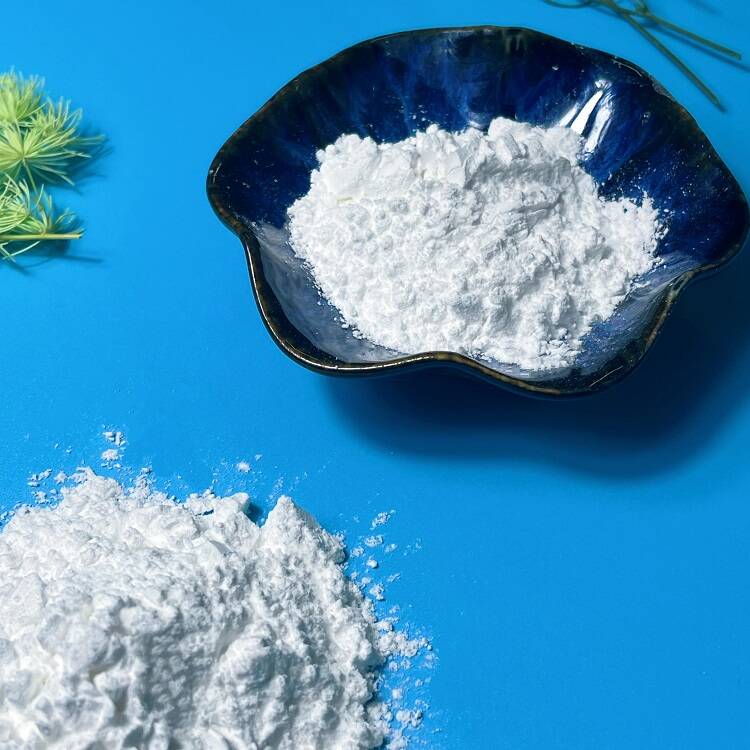-
Categories
-
Pharmaceutical Intermediates
-
Active Pharmaceutical Ingredients
-
Food Additives
- Industrial Coatings
- Agrochemicals
- Dyes and Pigments
- Surfactant
- Flavors and Fragrances
- Chemical Reagents
- Catalyst and Auxiliary
- Natural Products
- Inorganic Chemistry
-
Organic Chemistry
-
Biochemical Engineering
- Analytical Chemistry
-
Cosmetic Ingredient
- Water Treatment Chemical
-
Pharmaceutical Intermediates
Promotion
ECHEMI Mall
Wholesale
Weekly Price
Exhibition
News
-
Trade Service
effect of thickener synergy on low VOC latex paint
Jiang Qingmei, Liu Weiwei, Zhang Xinya, Lan Renhua, Chen Huanqin
(South China University of Technology School of Chemical and Energy, Guangzhou, Guangdong 51 0640)With the increasing human concern for energy and the environment, countries around the world have strict control of VOCs (volatile organic solvents) in coatings, with environmental protection properties of water-based coatings development and application has undoubtedly become a hot spot for people to study. As a new variety of coatings to replace the original solvent-based coatings, it has outstanding advantages, but there are some properties can not be comparable with solvent-based coatings, such as its stability, water resistance, alkaline resistance. Viscosity is an important factor affecting latex paint. Latex paint is mainly composed of emulsion, pigment, water, additives, it is water as a dispersion medium, although it can greatly reduce the VOC in the coating, but usually low viscosity, poor fluidity. The viscosity of latex coating has a great influence on its production, storage and construction, that is, on the subsidon, brushing, roller coating, film plumpness, leveling and flowability on the vertical surface of the film.
variety of thickeners, mainly cellulose ethers and their derivatives, alkali-soluble thickeners (ASE and HASE) and polyurethane thickeners (HEUR). How to select the right varieties from a wide range of thickeners and use them in low VOC latex paints through their compounding is extremely important to obtain paints that are viscous and meet other performance requirements. In order to improve the performance of low VOC latex paint, the synergy effect of various thickeners with low VOC content was examined. The synergy of thickener is of great significance in the development of low VOC latex paint with excellent performance.1 Experimental part
1.1 main raw material
(1) emulsion: self-matching pure propylene emulsion, synthetic main monosome with methyl acrylates (MMA), acrylates (BA); Functional monogems are methyl acrylic acid (MAA) and methyl acrylic hydroxypropylate (HPMA). (2) Paint filler: redstone titanium dioxide (R-706) (imported); 1000 eye talc powder, 1200 light calcium carbonate, ultra-fine diatom soil, ultra-fine mica powder (domestic); Ukip E (covering polymer) (import). (3) Thickeners: hydroxyethyl cellulose (HEC) (domestic), (the following are imported) HS30000YP2, contracted alkali-soluble thickener (HASE) TT-935, non-contracted alkali-soluble expansion thickener (ASE) ASE-60, polyurethane thickener (HEUR) SN-612. (4) Other additives: pH regulators (20% KOH solution) (self-displuented), (the following are imported) desmothering agents (NXZ, BYK-033), hydrophobic agents (HF-200), mold preservatives (LEX, NB-203), wetting dispersants (ORGAN731, CO-630).
1.2 Coating Basic Formula
Coating Basic Formula in Table 1.1.3 performance test method
(1) Odeon lysis is measured by the Brookfield KU-1 rotary viscosity meter after painting. (2) The post-thickening effect begins the day after painting and measures its viscosity changes using the Brookfield KU-1 rotary viscosity meter at different times. (3) Scrub resistance is based on GB/T 9266-1988 method with TXY paint wash-resistant brush meter for scrub resistance testing. (4) Storage stability refers to the number of days when the oven is placed at a high temperature of 50 degrees C and is kept without layering or water. Typically 15 days is equivalent to half a year at room temperature (25 degrees C), 30 days is equivalent to one year, the rest of the analogy. (5) Splashability refers to the splashing of slurry during the process of high-speed slurry with paint, direct visual comparison; The smell of opening a can refers to the amount of paint placed for a period of time, depending on the smell to compare the taste of each sample.2 results and discussion
2.1 thickener use methods on the performance of latex paint effect thickener different combination of use will have a huge impact on the viscosity of latex paint and the performance of each. In the process of painting in order to achieve the ideal comprehensive performance of the product, it is generally possible to use several different types of thickener compounding to achieve the best comprehensive performance. For the convenience of comparison, this experiment also examined the addition of a single type of thickener.
2.1.1 Effect of using a thickener alone
When using a thickener alone, the performance of the test final product is shown in the chart below.as can be seen from Tables 2 and 1: Using a single type of thickener, the resulting comprehensive performance is not ideal, such as the use of a cellulose alone, its fluidity is not very good, the smell of the can is relatively large; Or when adding synthetic thickeners alone, the advantages and disadvantages are obvious, with its latex paint has excellent fluidity, can be pulled into very fine silk constantly, wash resistance is also particularly strong (this is contrary to the yang group and other reported alkali dissolution or swelling thickener its scrub resistance will decline conclusions)
2.1.2 The effect of the compounding of two different types of thickeners on the properties of latex paint
However, if it is simply a compound thickener between different types of compounding use of its comprehensive performance is not ideal.2.1.3 Effects of the combination of three different types of thickeners on latex paint performance
The results of Table 4 are not much different from those of Table 2 (B), but from the comparison of the post-thickening effect, it can be seen that the natural (cellulose) thickener and two different types of synthetic thickeners will have a better effect after mixing, especially the combination of HEC, HASE and HUER can achieve the best results. A variety of thickeners mixed use, if the proportion is appropriate can get a relatively ideal comprehensive performance. This is mainly caused by different thickening agents. Cellulose thickens the water phase mainly under alkaline conditions. Its thickening process is hydrogen bonds and chain winding between molecules, because it is only the chain between its own molecules and winding, the formation of molecular chain is not long, so the flow is not very good. The synthetic thickener's molecular chain generally has both hydro-based groups and pro-oil end-base, can be combined with water, pigments, emulsions, the formation of a three-dimensional mesh structure, but its mesh structure is not strong, in the high shear force is easy to be destroyed. So if it is pure synthetic thickener paint, the second stage of pulping is easy to make the mesh structure under the action of high shear force is destroyed, resulting in splashing. In addition, when cellulose derivatives (e.g. HEC) are used in collaboration with synthetic thickeners (e.g. ligand types), the sterile type destroys the structure of the HEC thickener network, causing a decrease in viscosity or even strat layering, so the general ligation type should not exceed 15% of heC. The thickening mechanism of alkali-soluble thickener lies first of all in its ability to absorb itself on the surface of emulsion particles to form cladding, so that the volume of emulsion particles increases and the viscosity increases. Second, it can also enter the water-like system to increase viscosity. In addition, it mainly depends on the electrostatic rebuke force of the dissolved root ions under alkaline conditions to stretch the spiral molecular chain into a rod thickening, so its thickening efficiency is very sensitive to pH, the system pH must be reached 8.0 to 8.5 or so in order to make it fully thicken; The thickening mechanism of the polyurethane thickener is that there are water repugnants and strong polar groups in their molecules, which can be used in cooperation with the polymers and pigments of latex paint to form an instantaneous network structure. In addition, the synthetic thickener before the thickening effect needs to dissolve, this process takes a period of time, in a short period of time, such thickener molecules and water, pigments, emulsions can not be immediately cross-linked, after which will continue to produce cross-linking effect, which is the synthetic thickener easy to produce after thickening effect. Several different types of thickeners are used together, according to the actual formula to find the best proportion, can be made up for each other, so that latex paint to get an optimized comprehensive performance.3 Conclusion
(1) In the formulation design process, considering the advantages and disadvantages of various thickeners, examining the properties of thickeners on latex paint play an important role, as far as possible the use of two or three different thickeners used together, and through repeated experiments to find the best proportion of coordination, and ultimately achieve a better comprehensive performance.
(2) synthetic thickeners should be used in collaboration with cellulose, generally a system consisting of at least two or more thickeners. Cellulose, connective type, polyurethane and other three co-use effect is the best. When replacing a thickener, pay attention to its matching characteristics with other additives in the system. Various categories of thickeners are added in order, the general cellulose class is added before slurrying, or parts can be left to be added after pulping. Synthetic thickeners are generally added after pulping.
(3) the coordinated use of various thickeners is of great importance and significance to improve the performance of low VOC latex paint.






